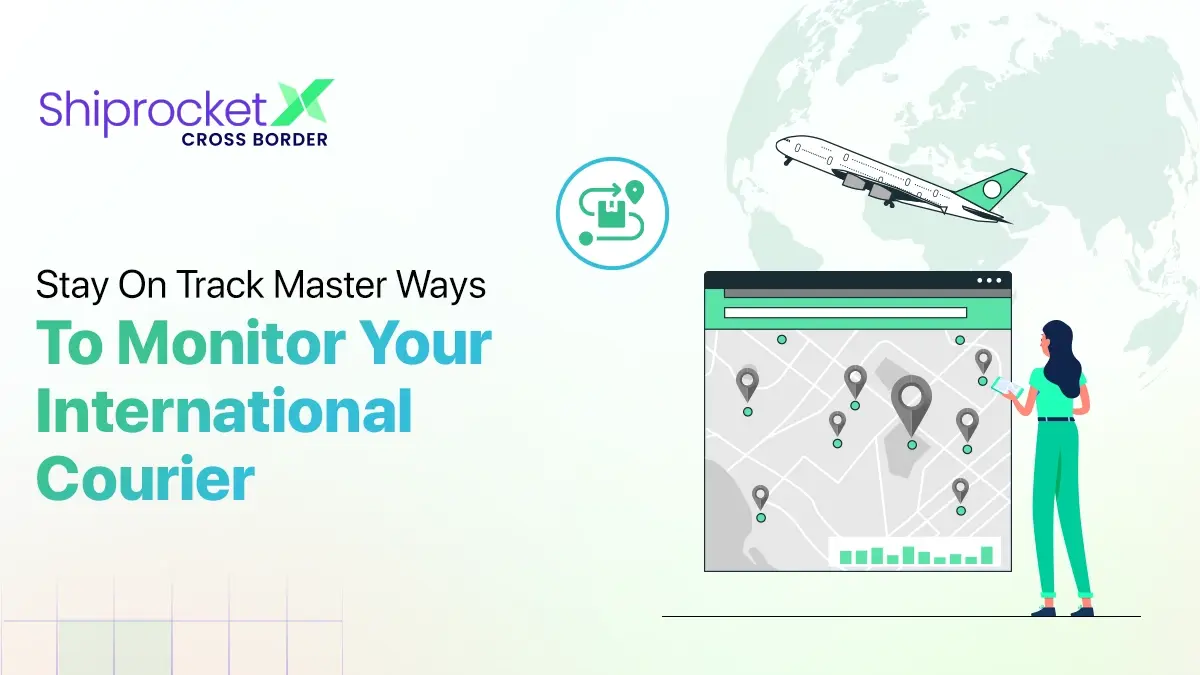Get an Insight Into Micro-Influencer Marketing
- Who is Called a Micro Influencer in the Social Media World?
- Why Brands Should Consider Working With Micro-Influencers?
- Different Ways to Collaborate With Micro-Influencers (With Example)
- Devising a Micro-Influencer Marketing Strategy in 6 Simple Steps
- The Expense For Working With Micro-Influencers
- Conclusion
Influencers are the new-age endorsers running ads in paid partnerships with brands on social media platforms. They have a more authentic reach than a TV commercial could ever have. That’s because people can relate with these influencers and get a real-time review of the product. The celebrities in commercials may appeal to the audience but they are out of reach of common people.
With hyper-connectedness around the globe with social media, the popularity of micro and macro influencers is growing. A recent Group M INCA India Influencer Market research report suggests that the Indian influencer market is expanding at a 25% CAGR (compound annual growth rate) and may reach nearly Rs 2500 crore revenue size by 2025.
Earlier, businesses preferred collaborating with influencers who had thousands or millions of followers. But this trend is shifting now, as brands are zeroing in on micro-influencer marketing.
This article acquaints you with the dynamics of micro-influencer marketing and in-depth knowledge about its dynamics.
Who is Called a Micro Influencer in the Social Media World?
Micro-influencers are content creators who fall in the 10K-100K followers bracket. They are on their journey to become big and have substantial followers that make a niche community. People relate the most with micro-influencers, and thus, they’re the most impactful ones to collaborate with and market your product.
By creating and posting content related to their specific interests, they hook a particular set of audiences vested in those niches. Let’s take the example of a makeup micro-influencer. This content wizard will mostly have a following of people interested in makeup products and techniques. Similarly, a fashion micro-influencer will attract a fashion-loving audience, and so on.
Now, let’s suppose your brand is introducing a new line of cosmetics, and you’d want to collaborate with the makeup micro-influencer. Such influencers are the perfect endorsers for brands looking to target and capture a niche market.
Why Brands Should Consider Working With Micro-Influencers?
To give you a clearer picture of how micro-influencer marketing can help you market your products and reach your ideal customer base, we’re outlining some of the benefits of tying up with micro-influencers:
Cost-Effective Strategy
The spectrum of influencers ranges from mega to nano influencers. Mega influencers are the big players with large audiences and charge heavily per post. For instance, Cristiano Ronaldo (CR7) charges nearly US $2.3 billion per post for promotions, currently sitting at the top of the mega influencer pyramid since a CR7 post gives a brand the maximum possible reach around the globe.
Micro and nano influencers, on the other hand, are sensational internet figures with a following of 10K-100K and 1K-10K, respectively. Since these influencers have a small audience, they take a nominal fee to promote brands. So, low expenditure becomes one of the major reasons brands invest in micro influencer marketing.
The rates will differ depending on the micro-influencers’ following size, content type, and social media platform, but unlike macro influencers, they still won’t cost you a fortune.
To give you some reference, as per the recent 2024 influencer-costs data, this is how much different types of influencers charge on average in India:
| Type | Followers | Rate Per Post |
| Nano-Influencers | < 1,000 | ₹500 to ₹2,000 |
| Micro-Influencers | 1K to 10K | ₹1,000 to ₹10,000 |
| Mid-Tier Influencers | 10K to 100K | ₹10,000 to ₹50,000 |
| Macro-Influencers | 100K to 500K | ₹50,000 to ₹2,00,000 |
| Mega-Influencers | > 500K | ₹2,00,000 to ₹10,00,000 |
High Engagement Strength
Micro-influencers have a deeper understanding of the demographics and motivations of their audience as compared to their counterparts like macro and mega influencers. So, brands can easily reach and connect with local and regional level audiences with the help of micro influencer marketing.
The mega and macro influencers may boast an enormous reach, but micro ones are high on engagement strength. They possess a better ability to engage their audience because people relate more with micro-influencers, considering them their equals, peers, or acquaintances. They are great for small enterprises trying to cover a new market segment or product category.
A Later x Fohr’s Influencer Marketing Report reveals that micro-influencers can usually generate a 2% engagement rate on sponsored and regular posts. Contrastingly, mid-tier influencers witness a 1.5% engagement rate and macro ones average 1.2%.
Targeted Audience
Mostly, these content creators specialise in an area of their interest and hence can provide small businesses with targeted audiences, boosting sales and customer acquisition for them.
Micro-influencers create a close-knit community of like-minded people sharing the same interests. It makes them highly impactful marketers for brands wanting to target a specific audience. Even though micro-influencers have a smaller number of followers than macro or mega-influencers, brands manage to reach the right prospects for their products.
Organic Conversations
The advantages of reaching and engaging the right audience by targeting niches through micro-influencer marketing include the possibility of authentic conversions increases for brands.
These internet sensations have the knack to create intriguing content featuring products that pique the interest of their audience in the products. People often inquire about their new purchases or the products they review. As a result, the posts of such influencers become a conducive space for real conversations about the product in the comments section, giving your brand organic reach and even initiating word-of-mouth marketing.
You also get the opportunity to share product-related information in these conversations, which helps you connect with customers on a deeper level.
Different Ways to Collaborate With Micro-Influencers (With Example)
It may be confusing for you to understand the ways to promote your product or brand through micro-influencer marketing. These brand examples should guide you along this path:
Brand Ambassador Programs
One way to promote your products and reach a diverse audience in a budgeted fashion is by making micro influencers your brand ambassadors. It’s an excellent strategy as these content creators know just how to influence and engage your target audience. People with common interests follow and trust them, which increases the likelihood of them buying your products.
Create your ambassador programs and encourage micro-influencers to sign up for them. It’ll add more substance to the deal if you reach out to the influencers who are already using or talking about your products.
For example, Lululemon, the athletic apparel company, is a great example. The brand has an ambassador program where it joins hands with micro-influencers who embody their brand values and lifestyle to promote their products.
Influencer Giveaways and Contests
Micro influencer marketing is not only pocket-friendly, but these influencers also end up doing giveaways for products they receive as gifts from brands. They create organic posts around this influencer gifting, reaching and engaging with a wide audience. This is a superb strategy to create brand awareness and have potential customers try your products for free.
Send out gifts to micro-influencers supporting your niche to create influencer gifting campaigns, where they review your products and give them to their followers.
For instance, the health and wellness brand Fitbit collaborated with fitness micro-influencers to host exciting giveaway contests where participants could win Fitbit products. The criteria set to win the giveaway was following both the influencer and the brand and tagging friends in comments.
Sponsored Content
You may have often come across influencers sharing sponsored reels and even mentioning the fact in the video. Many brands sponsor posts where influencers create content that naturally fits the brand’s products or services.
For example, Daniel Wellington, a Swedish watch brand, frequently teams up with micro-influencers. They provide them with watches and ask them to make content that aligns with the brand’s aesthetic, using specific hashtags.
Product Reviews and Unboxings
There are many influencers who love to review products for their audience and share their personal experience with the products. In fact, for some of them, the whole content strategy revolves around trying and reviewing new or viral products for their followers.
For instance, Glossier, a beauty products company, sends products to micro-influencers. These influencers then create ‘unboxing’ content and share their honest reviews on platforms like Instagram and YouTube.
So, you can find micro-influencers who can offer genuine reviews or first impressions of your product to their audience. The unboxing experience will also help promote your packaging, which may impress the customers.
Affiliate Marketing
Affiliate marketing is a very strong tool for persuading more people to buy your products. The eCommerce giant Amazon has been using this micro influencer marketing strategy for ages. In an affiliate program, you pay a commission to micro-influencers for each sale coming through their unique affiliate link. Followers often want or even ask for links from influencers when they share a new purchase. So, they’re likely to click your product’s link when an influencer provides it.
Amazon’s Influencer Program allows micro-influencers to create their own storefronts and recommend products they like. When the influencer’s followers purchase through their links, they earn a commission from Amazon.
Event Coverage
Events have always been a very tangible way to reach an audience. However, the idea here is to amplify this reach by inviting micro-influencers to your events, such as product launches, fashion shows, or store openings.
For example, Maybelline New York has invited beauty micro-influencers to attend and cover their New York Fashion Week shows, where they can share their experiences and the products used backstage with their followers.
Content Series or Takeovers
You can also collaborate with micro-influencers for social media takeovers or content series. Airbnb has partnered with travel micro-influencers for Instagram takeovers, where the influencers share their travel experiences and boast about the unique homes they stay in during their travels.
Collaborative Product Lines
When you want to create new products or collections, micro-influencers are your best bet. These influencers are creative and innovative in their marketing approach. Use this creativity to your advantage by collaborating with micro-influencers who can introduce new ideas and designs for curating a capsule collection for your brand that resonates with your desired target audience.
Take MAC Cosmetics, for example; they reached out to two micro-influencers, Jodie Woods and Alissa Ashley, who teamed up with the brand to create their own lip combos. The new enticing and versatile lip range complemented many skin tones and was suitable for everyday wear with a light or bold application. It conquered the hearts of a diverse audience, as this collaboration introduced a unique style and preferences to MAC Cosmetics’s product line.
Devising a Micro-Influencer Marketing Strategy in 6 Simple Steps
1. Jot Down Your Goals and Objectives
Like every other aspect of business, start here with defining your goals and objectives too. Ask yourself questions like: what are you trying to achieve with micro-influencer marketing? Who is your target audience? and more. This is a necessary exercise to figure out the types of content you may need and measure the performance of your campaign.
A list of some common influencer marketing goals includes:
- driving brand awareness
- generating sales
- attracting new followers
- boosting brand mentions
Like, many brands design micro-influencer campaigns around specific events such as a new product launch, and more. You need to know what is the ultimate goal of the marketing efforts you’re putting in.
2. Figure Out Your Content Types
Deciding on the type of content is highly crucial to your micro-influencer marketing campaign’s success.
What do you need your micro-influencers to do for you exactly? It’s a big question that needs precise answers. You may be looking for influencers to review your products through posts or videos, or you may want them to show your product range to their followers or even do video tutorials on how to use your products. There are numerous content types to select from and find a suitable one for your promotions.
3. Select Your Platform
Next, you need to dive into the multitude of social media platforms and pick one or more for your micro influencer marketing. There’s Instagram, YouTube, and TikTok among the popular ones, but plenty of others are a part of this social media family as well.
However, you need to choose the appropriate platform depending on the type of audience you’re tapping. Every platform is one dominant generation’s favourite; you’ll find your millennial audience mostly on Instagram (72%), Facebook (87%), and YouTube (66%), as they are the top three social media channels for them. For reaching the Gen-Z audience, TikTok may be the best platform.
The platform choice is also correlated to the content type you prefer. For instance, for short and entertaining video content like reels, you’ll have to search for micro-influencers on Instagram.
4. Enlist Suitable Micro-Influencers
Now, the next important task is to research and make a list of micro-influencers that can become your brand’s voice. One way to do this is by using relevant keywords to search for influencers who can effectively reach your target audience. Besides looking for this micro-influencer data on search engines or social networks, you can also use various tools available to effectively find micro-influencers using keywords, follower count, and other relevant filters.
Once you find a few names, check their profiles and work to understand if they can create the types of content you need.
5. Prepare a Persuasive Brand Story
What’s your brand all about? What makes you different? Create a compelling story about who you are and what you have to offer. This story will act as a thread to connect with people on a deeper level. For example, if you’re an apparel brand selling plus sizes, then inclusivity can be your story.
Micro-influencers can then narrate this story to their followers and discuss your products and services on social media.
6. Monitor and Measure Your Campaign Performance
As your campaign goes live, start monitoring its progress and measure its performance based on the goals you’ve set. Check if the influencers are actually able to give you the results you expect. This constant evaluation will keep you on track and help you make changes wherever necessary. Suppose one influencer gives you a better outcome than the other; then you know who to pick for your next campaign.
Make use of influencer marketing platforms that can give you the analytics to track the performance of your campaign in real time. You’ll get a fair idea of the reach, engagements, impressions, etc., of each post, which will help you optimise the campaign.
The Expense For Working With Micro-Influencers
It’s important to know the monetary value that these micro-influencers provide. It’s like calculating the ROI of your micro-influencer marketing efforts. After all, you’re putting in real money and risking losses by trusting the influencers to get you sales or new acquisitions.
To help you understand this dynamic better, let’s shed light on a few brands with micro-influence marketing experience:
Lumene: In 2021, Lumene, a beauty brand, engaged a few local micro-influencers in Finland to promote the launch of a new product line.
The brand asked these influencers to create a particular number of posts for the campaign: one feed post or a carousel and two stories around the Lumene products. They rewarded every micro-influencer with a 120€ worth of package.
After much deliberation, they selected 88 influencers who were fans of the brand. The influencer shared nearly 264 pieces of content in total.
Outcome: The campaign reached 1,56,048 people, and posts received 21,551 likes. People saved the posts 3031 times.
Maltesers: This is a chocolate brand In Estonia that collaborated with micro-influencers for its launch. Their creative campaign reached more than 130,000 people and garnered nearly 13,000 likes.
The campaign got recognition for its unique approach; instead of sending boring PR packages, the brand sent the influencers a box filled with chocolate, along with a red helium balloon that slid out as they opened the box. This created a fascinating unboxing experience for viewers when they shared a video unravelling the chocolates.
Solaris: It’s a shopping centre in Tallinn, Estonia, that executed the most creative Black Friday campaigns. During a Black Friday weekend, restaurants in Solaris served black food, and stores displayed their black products, which the micro-influencers promoted.
With this out-of-the-box approach, Solaris stood out during a highly competitive marketing period.
Outcome: The posts had a reach of over 246,606 people. They received 7392 likes and 150 comments, all with a small investment of only 0,12€ per engagement.
Conclusion
Micro-influencers are always keen to grow their audience base and gain popularity. That’s why they strive to collaborate and work hard with brands at reasonable charges. They do their best to establish long-term connections with brands they like by promoting their products and services. This eagerness and creativity give businesses the opportunity to reach a wider target audience, as micro-influencer marketing is all about niches. These influencers focus on specific topics that create a community of people with shared interests.
So, collaborate with micro-influencers to enhance your visibility among the right prospects for your products. It will help you create high and active engagement with your target audience.
A few effective ways to evaluate the ROI of micro influencer marketing would be tracking your website traffic, number of leads generated and the amount of sales the campaign got you.
You can contact the chosen micro-influencers by messaging them directly on their social media account, using influencer platforms, or emailing them.
The cost for micro-influencer marketing greatly varies across different platforms like Facebook, Instagram, Twitter, YouTube, etc. All these social media platforms have unique features, including the type of content, demographics, and the reach and engagement levels of an influencer.





